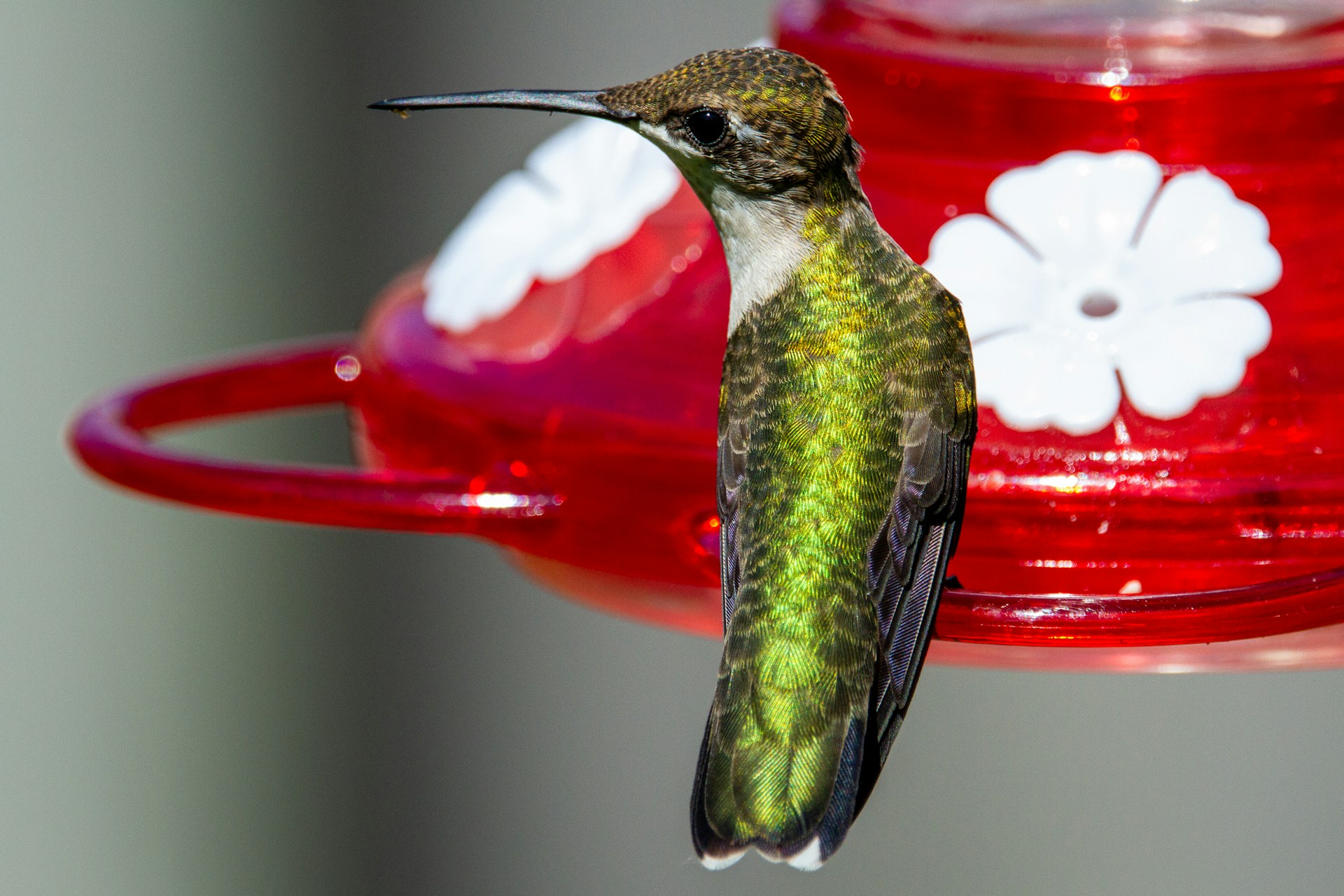Effective Strategies to Mitigate Territorial Behavior Among Hummingbirds at Your Feeders
Introduction: Understanding Territorial Behavior in Hummingbirds
The hummingbird dance at feeders is one of pure fascination—iridescent wings beating rapidly, beaks darting in and out for nectar. For outdoor enthusiasts, witnessing these tiny aviators energizes any garden or backyard space. However, understanding the territorial nature of hummingbirds is essential to creating a harmonious feeding environment. By strategically managing feeder dynamics, one can mitigate territorial conflicts and enjoy an abundance of hummingbird visits.
A vivid memory comes to mind: a feisty male Rufous hummingbird guarding his territory with vigor, chasing away any would-be nectar poachers. This guarding behavior highlights the importance of understanding and managing the dynamics at our feeders to ensure a peaceful coexistence among these nectar enthusiasts.
Understanding the Basics: Territoriality and Feeder Dynamics
Hummingbirds, especially males, are fiercely territorial, often engaging in aggressive behavior to protect their feeding zones. This territorial nature of hummingbirds is a natural instinct crucial for their survival, ensuring they have sufficient access to valuable nectar sources.
Male Anna’s and Rufous hummingbirds exhibit notable guarding behaviors, with each male staking out what experts term “feeding territories.” The guarding behavior of Anna’s hummingbirds, for instance, often involves persistent chases and aerial displays to deter intruders. Similarly, the guarding behavior of Rufous hummingbirds is showcased through aggressive pursuits and vocal confrontations, cementing their dominance at selected feeders.
Analyzing Hummingbird Behavior: Key Observations
A close observation of feeder dynamics reveals patterns that are critical for managing hummingbird interactions. Birds engage in repeated guarding and chasing behaviors, aiming to monopolize the best feeding spots. These behaviors can vary significantly among different species and individuals.
Studies have shown that superior spatial memory plays a significant role in a hummingbird’s ability to defend its territory. Hummingbirds with better spatial memory can remember the locations of feeders and perched sings, enhancing their guarding efficiency. This cognitive advantage influences their success in territory acquisition and defense, particularly among males during breeding seasons when competition is fiercest.
Patterns observed in gardens and feeder sites include the following:
- Frequent guarding of specific feeders resulting in some being more heavily guarded than others.
- A noticeable division of territories where dominant birds claim high-value nectar sources.
- Chasing and pecking incidents among hummingbirds, leading to frequent shifts in feeder dominance.
Gold Nuggets: Practical Tips for Mitigating Territorial Behavior
Use Natural Barriers
Implementing natural barriers, such as trees or buildings, can effectively break the line of sight between feeders. This strategy minimizes conflicts by making it challenging for one bird to dominate multiple feeders. Utilizing tree foliage or garden structures like arbors can dramatically reduce the likelihood of territorial skirmishes.
Spacing Feeder Placement
Correct feeder spacing is key to diminishing hostile interactions. Experts recommend keeping feeders about 10 feet apart. This spacing allows multiple birds to feed without feeling threatened, adhering to optimal feeder placement distance recommendations. Ensuring proper distance and strategic positioning of feeders can significantly reduce territorial disputes.
Introducing New Feeders
When adding new feeders, patience is paramount. Hummingbirds may take time to trust and incorporate new feeders into their routines. Gradually familiarizing birds with new feeders helps integrate them into established territories without immediate conflict.
Feeder Diversity Strategy for Multiple Birds
Adopting a smart feeder diversity strategy enhances multiple bird visits and reduces fighting. Placing feeders on opposite sides of the property or in locations separated by visual barriers ensures dominant birds can’t efficiently guard all feeders at once. This distribution strategy requires thoughtful planning to create a peaceful feeding environment.
Team Feeding Dynamics
Interestingly, some birds employ “team feeding” dynamics, where less dominant birds distract the leader to allow others to feed. Observing these team tactics can provide insights into setting up multiple feeders in a way that enables various birds to feed simultaneously, thus reducing the dominance of any single individual.
Case Studies: Examples from Hummingbird Enthusiasts
Outdoor enthusiasts have shared myriad stories illustrating dynamic strategies to manage territorial hummingbirds. Take “The General,” a dominant Rufous hummingbird who guarded every feeder in sight. By creating visual obstructions using garden décor and spacing feeders adequately, enthusiasts managed to reduce “The General’s” dominance and allowed other birds to feed peacefully.
Another enthusiast recounts how they strategically placed feeders at varying heights and in shaded areas, considering feeder placement recommendations to reduce conflicts. Additionally, deploying a combination of suet, nyjer, and caged tube feeders catered to different bird species and feeding behaviors, ensuring a harmonious backyard feeder environment.
Creating an Optimal Feeding Environment
Constructing barriers that do not obstruct the view from your house but effectively break the line of sight between feeders is key. Using decorative elements like partitions, garden trellises, or strategic plantings, you can create an environment where hummingbirds feel secure but not overly dominant.
Leveraging natural landscape features, such as existing tree lines or garden beds, can also aid in breaking sightlines and reducing conflicts. The goal is to allow you to enjoy watching hummingbirds while maintaining a peaceful feeding habitat for them.
Conclusion: Maintaining Harmony at the Feeders
Creating a balanced and harmonious hummingbird feeder environment involves a blend of understanding, observation, and strategic placement. By using natural barriers, adhering to feeder placement distance recommendations, introducing new feeders thoughtfully, employing a feeder diversity strategy for multiple birds, and observing team feeding dynamics, enthusiasts can foster a peaceful and thriving hummingbird haven.
Encourage experimentation with different strategies to find what best suits your garden or backyard setup. Through patience and keen observation, you can mitigate territorial behaviors effectively, ensuring that your feeders become a place where hummingbirds can coexist in harmony.

